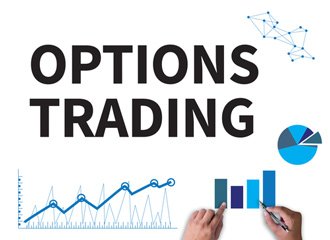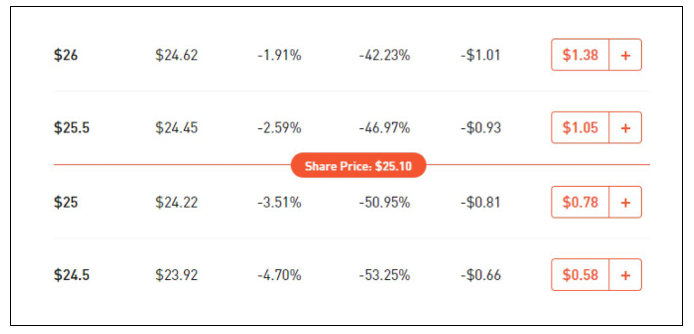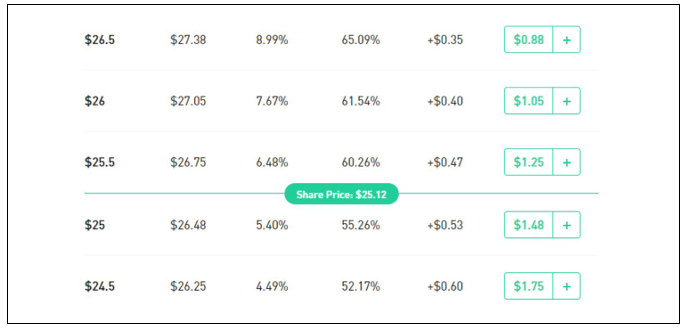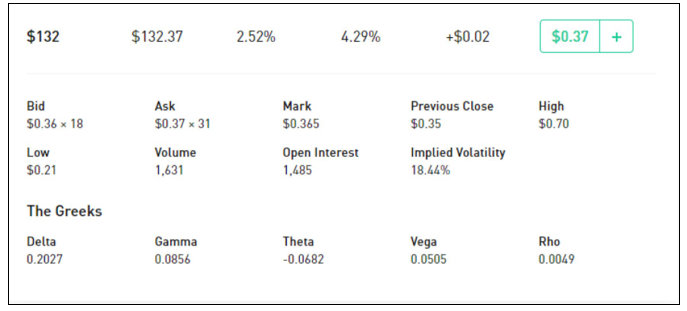Over the years, I've shown more than 300,000 traders the specific secrets of spotting low-risk trade opportunities with a high probability of success.
I regularly share moneymaking tips with my readers at Power Profit Trades, my twice-weekly publication that helps people build wealth with options.
And there's one piece of advice I'm sure to give right away.
Trade with logic, not emotion.

Logic will make you more money. Emotions can make you exit a trade out of fear, or stay in because of greed, and can be very costly. And all you need to trade with logic is a strategy.
When you have a strategy - a predetermined set of rules to follow - you can increase your chance of profiting on as many trades as possible. It'll keep you disciplined when entering and exiting the market.
So, how do you come up with a trading strategy? Let me show you...
Define Your Options Trading Style
The first step to creating an options trading strategy is to find out what type of trader you are. There are a few characteristics that can help you decide what style best suits your needs:
- Low-Risk vs. Speculative
Low-risk traders typically stick with in-the-money trades because they are less likely to expire worthless. More speculative traders might venture into "out of the money" trades, which offer potentially higher payouts but carry higher risk of losing what you invested when they expire.
- Directional vs. Non-Directional
Directional traders tend to identify as bullish or bearish. You can buy options to profit from either outlook. Other investors are non-directional - they see securities as being able to move in either direction in an instant. Non-directional investors typically look for any market indicators they can profit from.
- Short Term vs. Long Term
The last factor in determining what type of trader you are is deciding how long you are comfortable staying in trades. Short-term traders are in and out of trades in less than a month. Short-term trades tend to be riskier because they have less time to move in your desired direction. But if you are sitting on a position for too long, you could be missing other opportunities. It's OK as a new trader to favor lower-risk alternatives as you get used to trading, e.g., trades with an expiration date about 30 to 60 days out.
Select an Underlying Security
Before you can begin setting up your go-to strategy, you will need to pick a security to trade on (or against).
Here are three of the ways I like to find stocks about to move:
Read the Day's Financial News
Seems like a no-brainer, right? With the number of financial media resources available, it's easy to find the latest current events driving the markets. Take, for instance, the trade disputes between the United States and China that dominated news cycles in 2019. You might have looked at bearish opportunities in U.S. manufacturers (which often use Chinese raw materials). You may have even considered buying puts on the whole S&P 500 Index (NYSE: SPY).
On the other hand, Walt Disney Co. (NYSE: DIS) announced plans to roll out a new streaming service in November 2019. This generated a large price jump for the stock, which many traders profited from with call options.
Look for Share Buybacks
When a company launches a share buyback program, its executives begin to purchase shares of their own company from the market. This is likely happening because they believe their stock is undervalued. Or perhaps they are privy to news yet to be released that could positively affect their stock. That's a pretty good indication that the share price will be on the rise - and with it, the value of your option.
Here's an example from May 2018: fiber-optic company Amphenol Corp. (NYSE: APH). The company was coming off a great earnings report and had just started a $2 billion stock buyback program, to boot.
I recommended the Oct. 19, 2018 call with a strike price of $85. That's pretty close to the $88.28 share price at the time. By September 2018, more than a month before the expiration date, those contracts nearly doubled in value.
Watch for Earnings Release Dates
Earnings season can be the most profitable time of year to trade options. That's because when earnings come out, stocks move. They move on the anticipation of what the earnings report could tell us, they move on increased trading activity, and they move because other stocks in their sector are moving.
I'm always looking at earnings-related news to drive opportunities for my subscribers. I like to find stocks that typically rise before their earnings report is released and that have higher options volatility during that time, too.
Like in April 2018, when Q1 earnings were coming out. Looking at historical data for those two factors, I saw a potential profit opportunity with Yelp Inc. (NYSE: YELP). It looked like the stock was going to go up before the company released earnings, and I expected the call option premiums to do the same. I chose the May 18, 2018 $43 call options that were trading near $3, targeting a 50% gain for this one. And by May 9 - the day before Yelp's earnings came out - the option was up 54%.
Here's the secret with trading options around earnings season - you want to get out before the company releases earnings. That's because it means you'll be exiting when the frenzy is at a high, so you'll be selling into interest and can get a better price for your sale. Think of it like selling tickets to a big concert - the closer you get to the concert date, the more the tickets will go up in value. But as soon as the concert starts, they drop.
As soon as the company reports earnings, those option prices could fall.
Selecting an Option
Each stock comes with countless option choices with different expiration dates and strike prices, so you will want to begin by selecting an option that best suits what sort of trader you are.
Let's run through the following example: Bloomberg has just published an article stating that the popular photo-sharing site Pinterest Inc. (NYSE: PINS) is growing quickly. The stock is already up 4% today. You want to get in on the action, but you don't want to be tied up in a stock position for too long, so you decide to make an options play instead.
If you're a bearish, speculative, short-term investor, you might develop the following strategy:
I believe this is a fluke - Pinterest is nothing new, and this stock will probably take a nosedive once the "Bloomberg boost" dies down, so I'm going to buy a put option. I also like to free up my capital quickly so I can move on to the next trade, so I'll pick an option with an expiration date no more than 30 days from now.
Being more speculative, I don't mind picking an option that's a little bit out of the money. It's riskier, but I'll make more money from a smaller move in the stock price.
The $24.50 put is inexpensive at $58 a contract, and it will only take a 2.4% drop in the stock price for my trade to become in the money, so that's what I'll buy.

On the other hand, if you're more bullish and have a lower risk tolerance and a longer-term outlook, you might adopt the following strategy:
The Bloomberg article made a lot of sense to me, so I think this stock will rise in price even further.
To reduce my risk, I'll look for a call option with an expiration date at least 30 to 60 days away. I'll also choose an in-the-money option to reduce the risk of losing my entire investment.
The $24.50 calls are safer than the out-of-the-money options while still giving me a chance to double my money in the next two months, so those are what I'll buy.

This is a good example of how you can put your investor characteristics to use. Basically, with options, there's something for anyone who's looking to make money.
ADVANCED: Percent to Double and "the Greeks"
I frequently talk about searching for options with the lowest "percent to double." This is the percent that the underlying stock needs to move in order for you to double your money on the options trade, otherwise known as a 100% return.
The formula to calculate percent to double is below.

You may have seen this formula before... or perhaps you saw math and felt a twinge of fear. Don't fret; these calculations are surprisingly easy. And once you put them into practice, they will make much more sense.
If you're not already familiar, delta is one of several values that measure how an option's premium changes due to varying external forces.
These values are known as "the Greeks," as their names are derived from Greek letters. Delta measures how an option's premium changes when the price of its underlying stock changes.
There is a complex algorithm used to determine the value of delta for every option, but you will never have to do that math - the delta of every option will be represented on your broker's website.
Let's take a look at the following Microsoft Corp. (NYSE: MSFT) call options to better understand position delta.
For the following MSFT May 24, 2019 $132 call, we see the delta listed as 0.2027, or 20.27%. This means that for every one point ($1) the underlying security moves, the premium for this contract will change by 20.27% of that $1 increment, or $0.20.

Picture taken from Robinhood.com
Now that we know the delta, finding out how far the stock needs to move for us to double our money is as easy as plugging numbers into our percent-to-double formula.

The option premium is $0.37, the option delta is 0.2027, and the current stock price is $132.37.
You can plug those numbers into any calculator and get the following:

So, according to our percent-to-double formula, MSFT stock would only need to increase by 1.4% by the expiration date in order to double your money.
You will find that the higher an option's delta is, the lower its percent to double will be. So, options with a reasonably high delta (.70 and above) will have a higher chance of doubling.
That being said, options with higher deltas also tend to have higher premiums, increasing your risk.
There are a couple things to keep in mind when making decisions based on the percent to double:
- Neither an option's delta nor its percent to double is constant; both will fluctuate slightly with the
- Delta cannot account for time decay on your option or unexpected volatility in the market. Near-expiration trades can represent a degree of uncertainty, posing a greater
The percent to double is an excellent tool for selecting an option to trade on. But this is not a trading strategy in itself. Particularly for beginning investors, you will want to use a low-risk trading strategy.
As you now know, options can be low-risk because you're spending less than if you bought the stock directly. But you can further lower an option's risk by buying one with an expiration date that's further away. That allows more time for the stock to move the way you want it to.
You can also lower risk by picking a strike price that's in the money. The further in the money your strike price is, the less likely it is that it will be out of the money on the expiration date.
Shorter-term, more out-of-the-money options come with potentially higher returns. But while you're still getting your feet wet, you're probably better off sticking with lower-risk options.
Position Sizing
Once you know exactly which stock you are trading on and which option for said stock you would like to trade, it's just a matter of choosing the number of contracts you want to buy.
Before you place your order, you'll want to know your risk tolerance and decide a dollar amount you are willing to risk on any given trade. One way to do that is to spend the same amount on every trade. This allows you to make adjustments to your strategy according to market behaviors, rather than operating by guesswork on a trade-by-trade basis.
Seasoned traders know that they can only risk a small percentage of their capital on any one trade. That way, no matter what happens (including losing the entire value of the trade) your portfolio will survive to trade again tomorrow.
Although it's a personal decision between you and your financial advisor, I tell my readers to risk no more than 2% of their portfolio on any one trade.
Position size and maximum risk level go hand in hand. If you decide that $500 is your maximum risk for any trade, you can only trade $500 divided by the price of the options contract. For a contract trading at $1 per share ($100 per contract), you can trade five contracts.
This is important to know when deciding what specific options to trade. Some may be priced above your limit, which is a sign you'll want to sit out the trade. Chasing big wins with bigger positions is a quick way to lose your money.
Instead, focus on opportunities within your predetermined position size until you've built up enough of a war chest to go after bigger targets. There are plenty of triple-digit profit opportunities at any contract price level.
Exit Strategy
Once your order is set up, the next step is to know when to take your profits. At this point, you will want a clear target profit in mind. I typically tell my readers to always aim for 100% profit - or more in some cases - unless there's a special situation. But ultimately, your target profit should be decided by you and your financial advisor.
There are three benchmarks for taking profits:
The first benchmark is if you have purchased more than one contract and your trade doubles before your profit target, take half. This will let you ride out your trade on "the house's money" without having any of your initial capital on the line. You can take the rest when you hit your target or before expiration.
The second benchmark for taking profits is when you hit your target, IF your target is greater than 100%.
It's tempting to keep your money in a trade that is performing well, but this isn't a good idea. If you hit your target, take your money and move to the next trade so your winner doesn't turn into a loser.
The third benchmark is when the option is about to expire. At this point, you are out of time, so take your money, win or lose. If you are in your last couple days of trading and you are seeing a substantial loss, it's usually safe to assume this position won't turn around for you. It may be time to cut your losses.
Speaking of loss, not all trades will be profitable. If you have lost 50%, cut your losses by closing your position, and move on to the next trade.
If you hit a trading slump where you are losing a few trades in a row, remember it will not last forever. Check your money-management rules to make sure they are sound. Make sure you are following your rules, and keep going.
Consistency is key.
Now you know how to pick a trading strategy to set yourself up for long-term profits.
When it comes to fast money, I have a powerful (and lucrative) options trading secret that you can learn how to harness for yourself.
It's how I'm able to make such fast, profitable moves on companies like Netflix, Apple, Facebook, even Amazon - the reason I'm able to see major paydays long before they happen.
We're talking about the potential to see the future of any stock on the market.
I'm going live on camera to show you exactly how to do it.
Believe it or not, it's as easy as a few simple clicks of your mouse...
In no time at all, you could be lining up trade opportunities one by one and watching as your account grows bigger and bigger.
Click here to get access to this live footage.
Follow Money Morning on Facebook and Twitter.
About the Author
Tom Gentile, options trading specialist for Money Map Press, is widely known as America's No. 1 Pattern Trader thanks to his nearly 30 years of experience spotting lucrative patterns in options trading. Tom has taught over 300,000 traders his option trading secrets in a variety of settings, including seminars and workshops. He's also a bestselling author of eight books and training courses.



